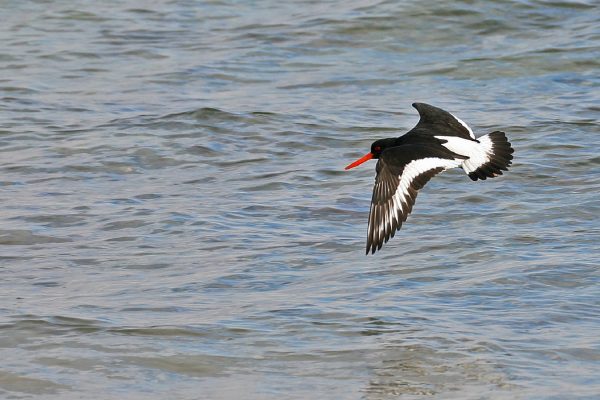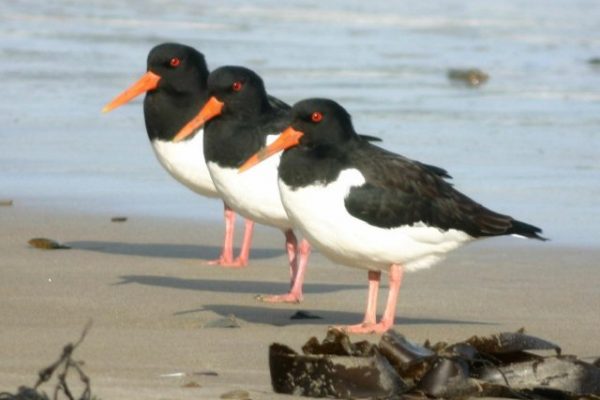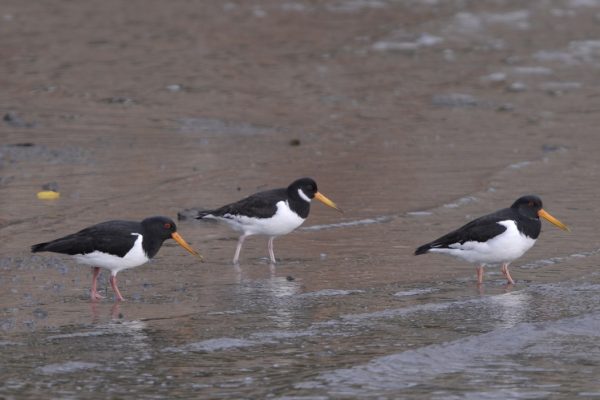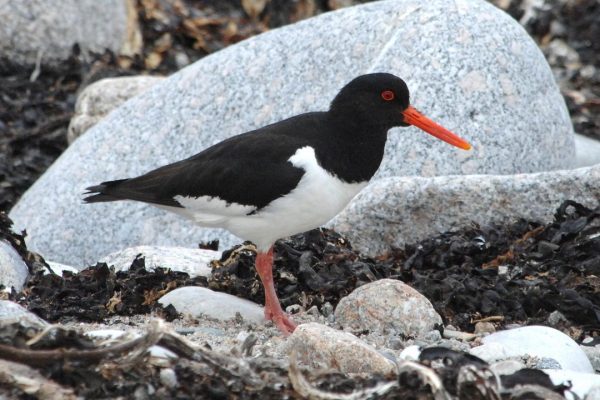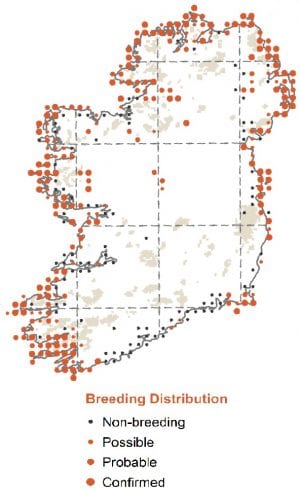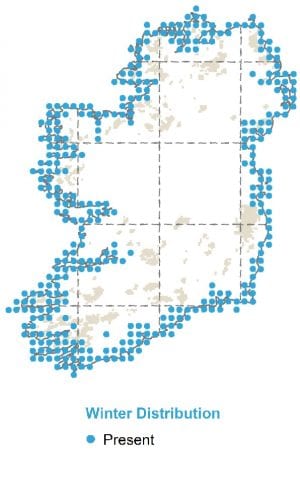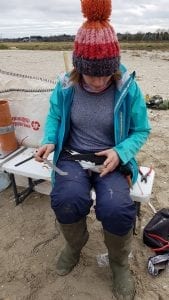
Oystercatcher
| Irish Name: | Roilleach |
| Scientific name: | Haematopus ostralegus |
| Bird Family: | Waders |
red
Conservation status
Conservation status
Status
Resident & winter visitor (from Iceland and the Faeroes) - largest numbers in Ireland between September & March
Identification
Large, distinctive wader with long orange-red bill, black head, chest and upperparts and white underparts.
Voice
Noisy - call is shrill, loud 'beep'. Piping call usually from the ground comprises phrases often run together and accelerating 'kip kip kip-kip-kip' and fast 'kli-klikli', and bubbling trill 'prrrr…'. Flight song, usually made in wide-circling display-flight is slower 'plee-ah plee-ah' repeated in time with wingbeats.
Diet
The main food resource includes the larger invertebrates, particularly mussels and cockles that proliferate along sandy coasts. They also occasionally feed on grasslands where they prey on tipulid larvae and earthworms. They feed by both sight (for polychaete worms) and touch (bivalve mussels).
Breeding
Nests principally on shingle beaches, dunes, salt marshes and rocky shores around the coast, but also on some large inland lakes.
Wintering
Use all coastal habitats, and particularly favour open sandy coasts. Around 60,000 Oystercatchers spend the winter around the Irish coast, which is a decline of around 28% since the early 2000's.
Monitored by
Blog posts about this bird
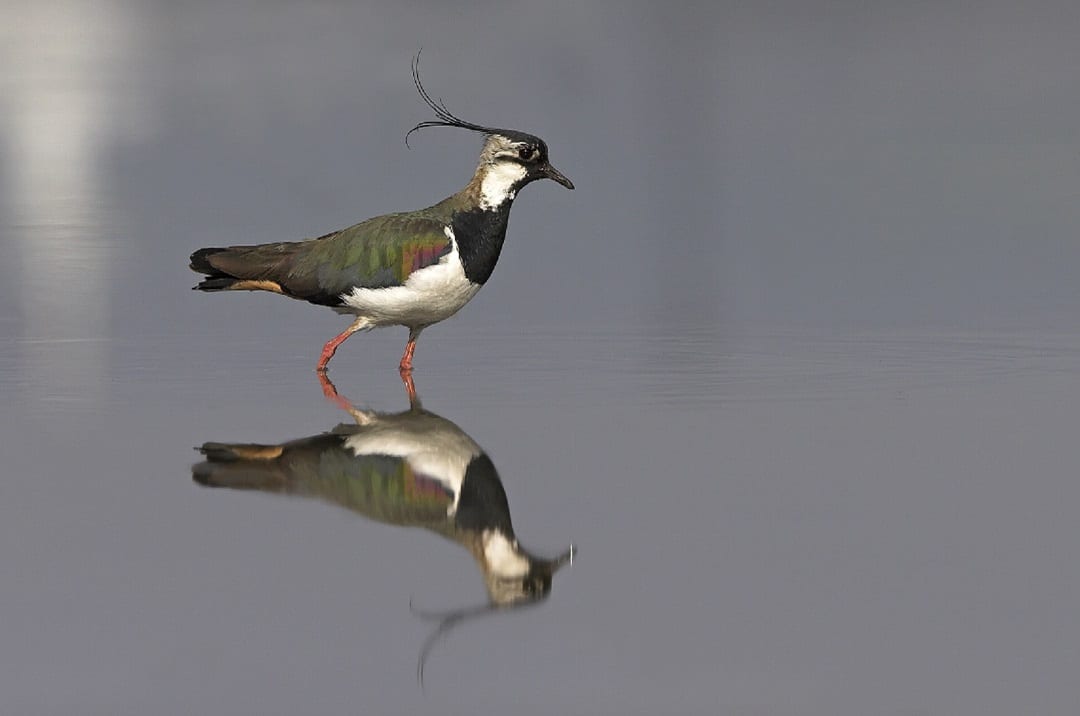
BirdWatch Ireland welcomes An Bord Pleanála decision on Boyne Greenway proposal
BirdWatch Ireland welcomes An Bord Pleanála’s decision to uphold the need to protect sites for threatened bird species by refusing to grant permission for a proposed new section of the Boyne Greenway.
The proposal for the construction of a pedestrian walkway and cycleway from Drogheda town to Mornington Village in County Meath was refused by An Bord Pleanála (ABP) at the end of August. In its report, ABP stated that it was not satisfied that the local authority has demonstrated beyond reasonable scientific doubt that the proposed development would not adversely affect the integrity of three protected sites – Boyne Coast and Estuary Special Area of Conservation (SAC), River Boyne and River Blackwater SAC and the Boyne Estuary Special Protection Area (SPA).
It noted that an absence of detailed information about a 2.4 km boardwalk proposed to be built inside the protected areas meant that avoiding adverse effects on these sites could not be guaranteed should the development go ahead. ABP also stated that it was not satisfied that important sand dune habitats would not be damaged by the greenway, nor that post-consent monitoring aimed at mitigating damage could be relied upon.
The impact of increased human activity along the Boyne Estuary and the risk of adverse impact that this could have on wintering waterbirds of the Boyne Estuary SPA was also noted, with ABP adding that it was not satisfied that proposed mitigation measures would be effective in preventing disturbance of these species.
This refusal and the reasons behind it are in line with concerns that have been raised by us since the project was initially put forward. We made our first submission to An Bord Pleanala regarding the greenway during the initial public consultation process in September 2020. While, as an environmental organisation, we welcome initiatives that reduce car usage and subsequently, greenhouse gas emissions, we objected to this development due to the significant threat to the bird life in the Boyne Estuary SPA.
With 2.4 km of the greenway proposed for construction within the boundary of the Boyne Estuary SAC and SPA and adjacent to the River Boyne and River Blackwater SAC, we had strong concerns about the threat of human disturbance and potential displacement this could cause to waterbirds in this area. From information provided by the developers, BirdWatch Ireland estimated that 210,000 new walkers including with dogs and cyclists would be using the boardwalk within the habitats for migratory waterbirds during the winter period when the birds are refuelling and resting before returning to Greenland, Iceland and the high Arctic to breed.
Migratory birds need access to safe roosting and feeding sites in order to rest and feed while overwintering in Ireland. However, disturbance from pedestrians, cyclists and dogs can cause birds to leave or completely avoid certain sites, leading to increased daily energy expenditure coupled with insufficient rest and fuel levels. This negatively impacts the ‘fitness’ of these birds (defined as the ability of an individual to survive, and breed and produce viable offspring, hence securing future generations of the species), so therefore can lead to population declines. As the frequency and duration of human activity on the proposed greenway would be high, there is no doubt that it would lead to disturbance to the bird life in the SPA.
BirdWatch Ireland made an additional submission in May 2022 following a request by ABP for further information from Meath County Council. On reviewing the additional information provided, we concluded that those proposing the project had not proved that disturbance caused by the greenway could be mitigated by their suggestions of screening and signage along the boardwalk.
Our submission was underpinned by Irish Wetland Bird Survey (I-WeBS) data showing both national and site-specific declines in the waterbird species listed for the Boyne Estuary SPA. Of the ten wintering waterbirds of special conservation interest listed for the Boyne Estuary SPA, half have a declining site status based on the long-term 23-year trend – Oystercatcher, Golden Plover, Grey Plover, Lapwing and Turnstone. The fact that these species are in decline at sites that are designated to provide a safe space for them underscores its unsuitability for a greenway. It further highlights the failures of the relevant authorities to manage existing activities that are causing deterioration of habitats and disturbance to waterbirds. The sand dune habitats, in particular, have undergone a great amount of damage due to a lack of management.
The overarching Conservation Objective for Boyne Estuary SPA “is to ensure that waterbird populations and their wetland habitats are maintained at, or restored to, favourable conservation condition”. We welcome the fact that, in this instance, this objective and threats posed by development to already vulnerable waterbirds have been acknowledged. However, looking forward, we believe there is a clear need for strategic guidance on greenway proposals, guidance which gives equal footing to biodiversity, climate and the needs of local residents. Not only would this approach prevent environmental damage, it would also reduce the amount of time and public money spent deliberating such proposals.
BirdWatch Ireland fully supports the development of greenways and initiatives that promote a modal shift in transport. These have obvious important benefits to climate but also economic and well-being benefits. However, it is vital that such developments do not come at a cost to our biodiversity, which is already experiencing pressures from all sides. In May 2019, Dáil Éireann declared a climate and a biodiversity emergency. Both must be addressed together.

Starting 2020 with a (literal) BANG!! Catching and colour-ringing waders in Dublin Bay
In January 2020, the Dublin Bay Birds Project Team put in a huge effort to fit colour-rings (safely, and under license) to the legs of a portion of the wintering waders in Dublin Bay. Over four days and nights, we caught and ringed 235 waders of 6 species, with 23 ‘re-trapped’ birds, two of which were Icelandic-ringed Oystercatchers! The precise tally is 199 Oystercatchers, 23 Black-tailed Godwits, 5 Redshank, 4 Dunlin, 3 Curlew, and 1 Knot.


We used a highly specialised technique called ‘cannon-netting’ (firing a large net outwards using weighted projectiles propelled from cannons) to capture the birds. To do this, we 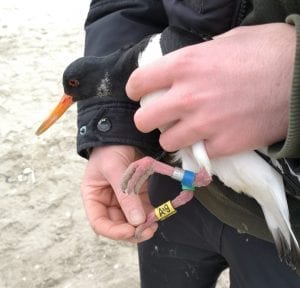
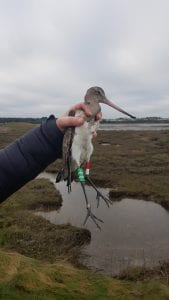
Essentially, the fitting of colour-rings to the legs of these wintering waders in Dublin and the subsequent reading and reporting of them (and similarly the fitting of small GPS-devices to birds) is 
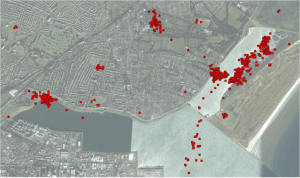

Now the work is to go out and look for all of these colour-ringed birds, read those inscriptions and submit them to us!
Submit your resightings HERE!
The Dublin Bay Birds Project is very lucky to be supported by Dublin Port Company who keenly recognise the value of this work and the data it generates.

This work was carried out under license from the National Parks and Wildlife Service and the British Trust for Ornithology.

